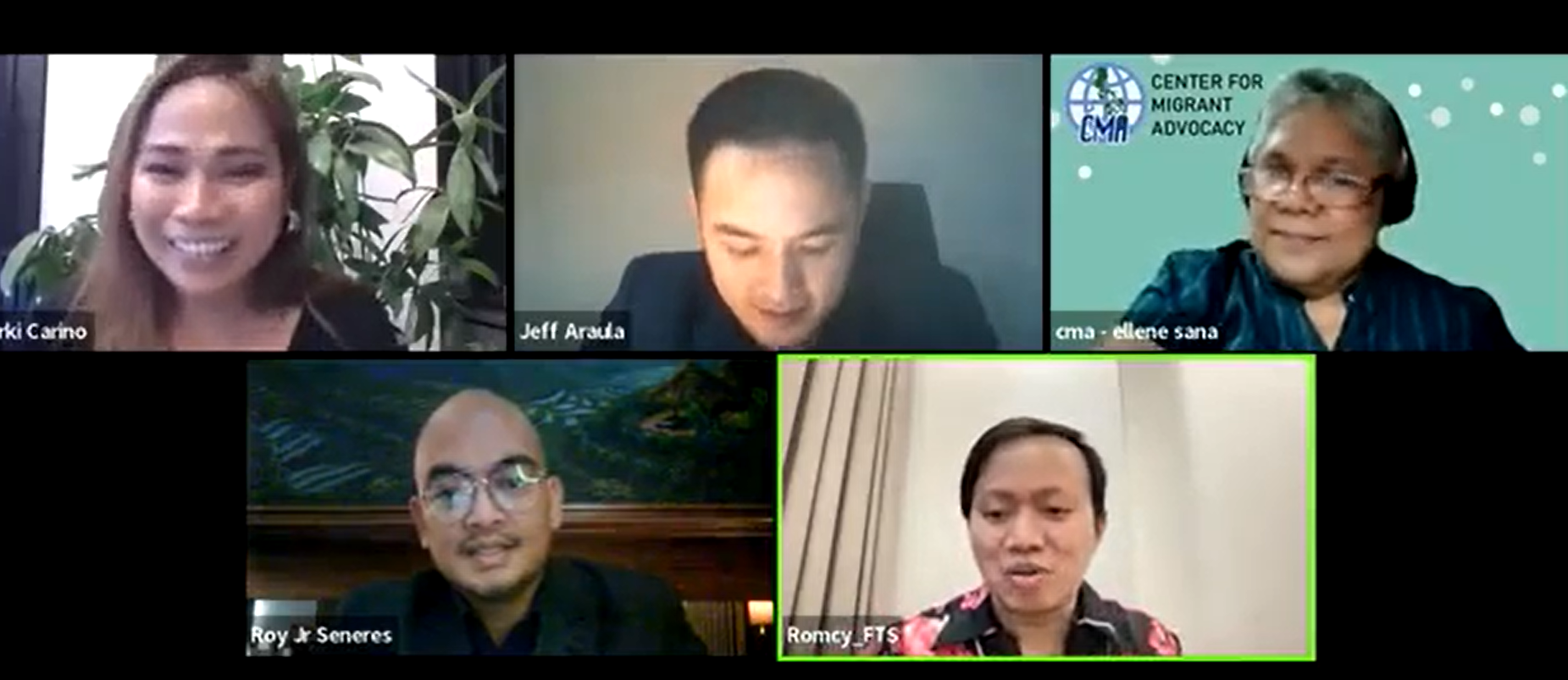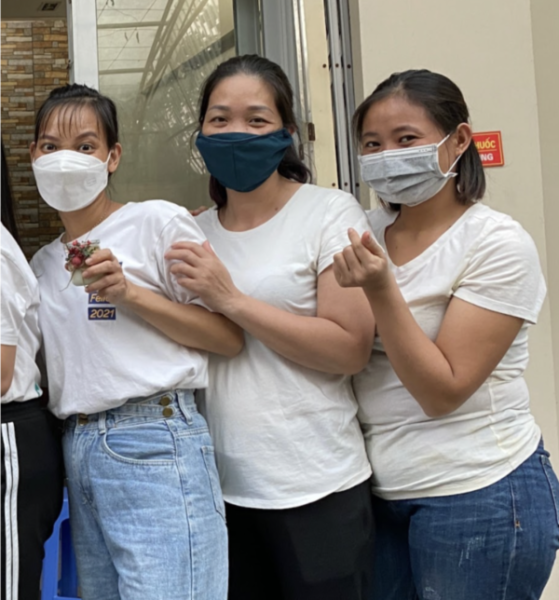We were slaves of the Pharaoh
We, as Jews, grow up with this phrase. The passage from slavery to freedom is at the very heart of our story as a Jewish people. Everything we are – our sense of shared community and common heritage – stems from breaking the chains of bondage. The rule of law, which is so central to our culture, became possible with the Exodus, because only free people can expect justice. So every year, we gather at Passover and retell the ancient tale. We recline, as we should, to luxuriate in the comforts that only a free people can enjoy.
But, for tens of millions of people, slavery is not an historic relic. It is the frightful, brutal reality of their lives. Almost 30 million people are treated as possessions. They are ruthlessly exploited in hard, degrading and dangerous labor. I have seen with this my own eyes: girls and women victimized by sex trafficking, little girls used as domestic servants, little boys working on fishing boats, women breaking rocks by hand in a stone quarry, men sent down primitive mine shafts in search of gold or rare minerals, entire families working as slaves for a loan shark over a debt that will never be paid off.
A quarter of those enslaved are children. The majority are women and girls. Most slavery occurs in seemingly ordinary businesses – mines, farms, fishing boats, construction sites, stone quarries, brick kilns, carpet factories, and restaurants. Slavery is found wherever the products and services depend heavily on manual labor.
These victims are held through force, fraud and coercion. They are not compensated for their work. They cannot leave. Their lives are plagued by extreme poverty and hardship. They live outside the redemptive powers of law, justice, mercy or common decency.
How can this be? How can the ancient curse of slavery still exist?
In my last visit to India, I entered a tiny hamlet composed of a handful of huts made of cow dung, mud and thatch and that had dirt floors. The inhabitants owned nothing more than a couple of pieces of crude, hand-made furniture. Running water and sanitation were unknown. There was no school for the children. People did not have access to health care. These low caste Indians purportedly owed debts to the high caste landlord on whose property they lived. The landlord gave them just enough sustenace to keep working.
My Indian colleagues and I entered the village on foot. We had to hide to speak to the villagers. They told us that if the landlord or his agents saw them speaking to us without permission they would be beaten. One man said to me, “My father was a slave. I was born a slave. I don’t want to be a slave anymore. I don’t want my children to be slaves.”
What this example tells us is that slavery springs from vulnerability. While slavery exists in every country, the vast majority of slaves are to be found in south Asia and west and central Africa. However, poverty alone does not explain slavery. Rather, slavery afflicts poor people who don’t have the tools to protect themselves. Three factors are key: ignorance, the absence of basic services and lack of legal protection.
Ignorance of rights and risks is a critical vulnerability. People enslaved by loan sharks often don’t know that demanding slave labor in payment of a debt is illegal; they start working without knowing they are victims of a crime. People in impoverished rural areas who are desperate for work will believe the trafficker who says, “There is work in the big city or in Qatar. Just get in the truck and let me hold on to your passport until we get there.”
At Free the Slaves, we work with local grassroots organizations to educate vulnerable communities about their rights and the risks of trafficking. We use methods and messages that are appropriate to the local context. In the Congo, for example, we support the broadcasting of anti-slavery messages over a network of community radio stations.
We work with communities to organize anti-slavery committees comprised of community members. In Nepal, they are called Community Vigilance Committees. In Ghana, they are Community Child Protection Committees. The committee members are given additional training and tools so they can act as a neighborhood watch against slavery. For example, the anti-slavery committee will draw up a list of the children in the village and track their whereabouts to be sure they are not engaged in forced labor. The committees also become the bridge to the police and other authorities to help secure protection for the community.
Vulnerable communities typically lack access to schools, health care and credit. Out-of-school children are particularly vulnerable to being trafficked. The absence of health care will generate a financial crisis that is exploited by traffickers. People go to loan sharks in the absence of legitimate sources of credit.
Working with our local partners, Free the Slaves helps at-risk communities gain access to these essential services. For example, we help villages organize savings and loan groups so they don’t have to turn to loan sharks. When we can’t help directly, we build relations between the communities and other organizations or government agencies that can provide schooling, health care and credit. Increasing basic household security reduces the likelihood that a family will be exploited.
Enslaved and at-risk villages lack legal protection. In part, this reflects weak laws. For example, until very recently, there was no penalty in Haiti for keeping a child in forced domestic servitude. Police are often very poorly trained and unaware of their own laws regarding slavery and trafficking. In other cases, corruption inhibits law enforcement.
We work with local organizations to advocate for better laws and improved law enforcement. In the case of Haiti, we helped a local coalition secure a new law that greatly increases the penalties for child slavery. We train police and other government officials. We also train journalists to report on slavery, since public scrutiny makes it harder for police to turn a blind eye or collude with traffickers. In Brazil, we are supporting a group of young reporters to carry out investigative journalism focused on slavery.
We work with local organizations and authorities to liberate those in slavery and help newly freed people get the services they need to reclaim their lives. In India, we support an ashram that cares for girls and women who are victims of sex trafficking. We provide legal services to pursue restitution for those who have been victimized and prosecution of perpetrators.
So these are they keys that open the locks of slavery: educate and organize, promote household security, liberate and prosecute.
We know this approach works. Last year, working with partners, Free the Slaves rescued over 3,100 people from slavery, helped almost 1,200 communities resist slavery, educated 18,500 people in villages about how to protect themselves from traffickers and trained over 1,500 government officials.
By sheer coincidence, the day after I visited the slave village I described for you, we went to a village named Sakdouri that had been liberated just one year earlier. Eighteen families – 52 people in all – had been enslaved in a brick-making factory. One of the men got word to a neighboring village that had already been liberated. They, in turn, contacted our local partner and our country director, who worked with the police to mount a raid on the factory. One year later, I met with them in a lovely new school they had built for the village children. They described what had happened in that year of freedom. The villagers were earning a living from farming, children were going to school, they were getting health care and new homes had been built. A paved road was coming to the village. Most importantly, they said, “We know what happened to us and why. We know how to protect ourselves. No one will ever make slaves of us again.”
More than that, they told us they had become campaigners for freedom. They were going to surrounding village and educating others about how to protect themselves.
So they told us their story and we got up to leave. But the villagers said, “No, no, no. You can’t leave yet. We have to sing you our freedom song.” So they took out their instruments and began to sing: “We know our rights. We keep our rights. We do not fear sticks or guns or slave owners. We will achieve our destiny.”
This is what we seek – to hear freedom’s song in many languages.
Much more can be done. We can move from freeing thousands to tens and hundreds of thousands. But this will only happen if good people join the fight against slavery.
That is why I am asking you to join our Passover Project. Soon it will be the High Holidays. Between Yom Kippur and Pesach I would like you to join the villagers of Sakdouri in being campaigners for freedom.
You now know the truth of slavery and how to stop it.
Educate your families, friends and neighbors.
Be careful consumers and investors. Visit KnowtheChain.org, which can give you information about whether companies are working keep slavery out of their products.
Be an advocate. Sign up on our web site – freetheslaves.net – and support our advocacy for anti-slavery policies.
Be a donor to Free the Slaves. The work of freedom is not free. There’s more information about Free the Slaves in the lobby and envelopes in which to place donations. We need your help.
Join the Passover Project.
We Jews have a special connection to the curse of slavery and to its eradication.
We are commanded to retell every year the story of passing from bondage to freedom. When we participate in the Seder we fulfill a covenant with history to celebrate freedom.
But this covenant is not merely a treasured memory. It is also a promise we make to the present and the future. Our joy at liberation in the past must be matched by a commitment to eradicating slavery today.
Next Pesach, you will, God willing, gather with your loved ones once more and ask, “Why is this night different from all other nights?” Let your answer be, “I am a modern abolitionist.”
When next you ask, “Why is this night different from all other nights?” declare, “We have claimed the mantle of Moses and we are helping to liberate those who are slaves in our time.”
When next you ask,“Why is this night different from all other nights?” say, “Because this Passover, we are part of the joyous work of liberation, not only for ourselves,but for all who are in bondage. This Passover, we are helping to spread freedom’s song.”
Then that night, my friends, will be truly different.
Todah rabah. Shabbat shalom.
Editor’s note: This sermon was delivered by Maurice earlier this month to Congregation B’nai Israel in Emerson, New Jersey. Our thanks to the congregation for inviting Maurice to speak, and for their support of Free the Slaves. Stay in touch with the FTS blog for details of the Passover Project in 2015.



